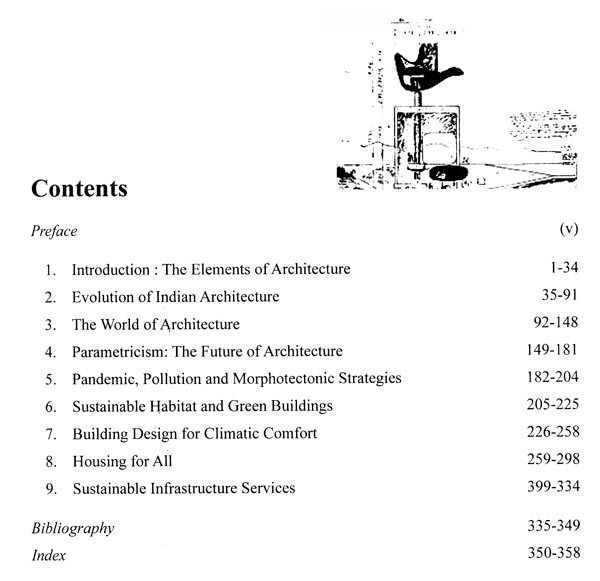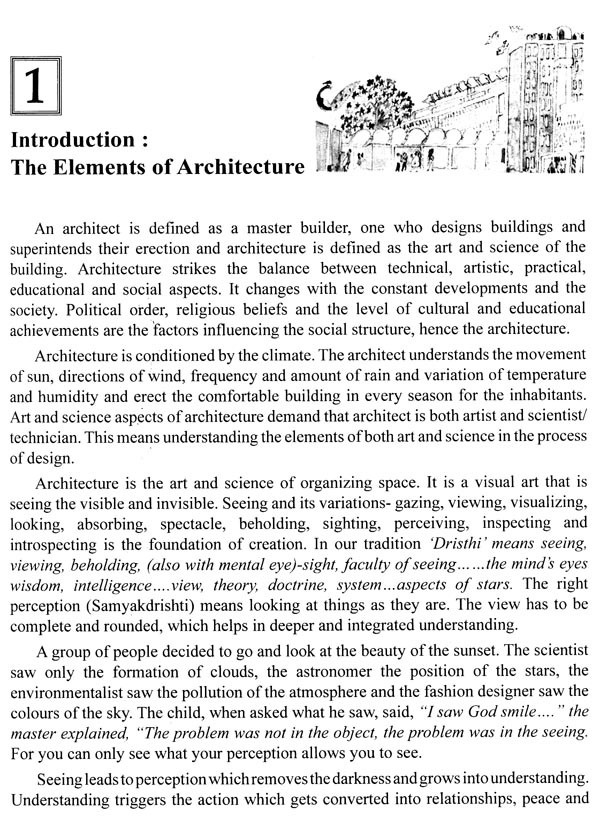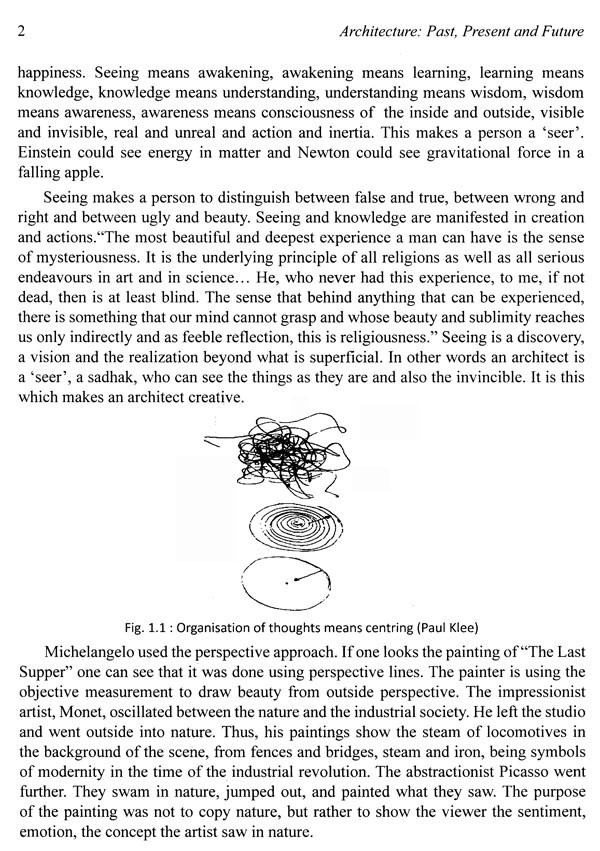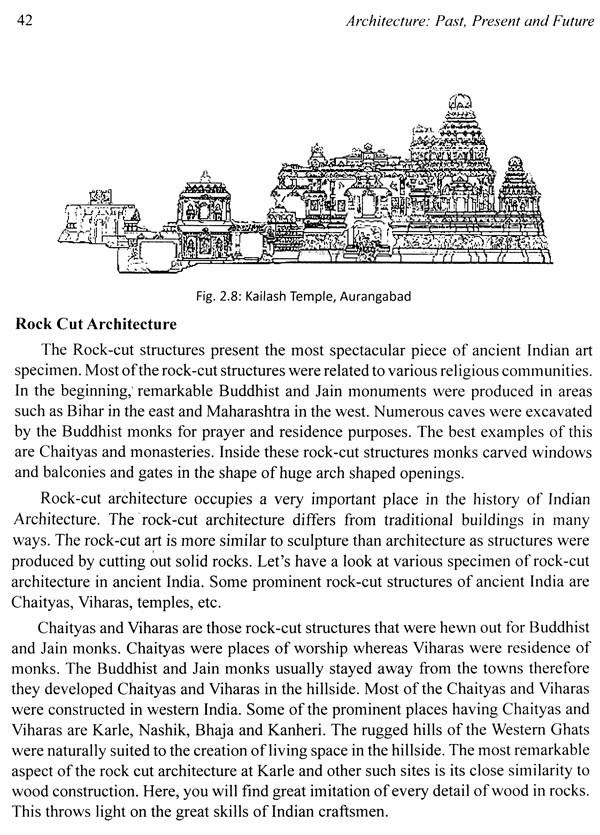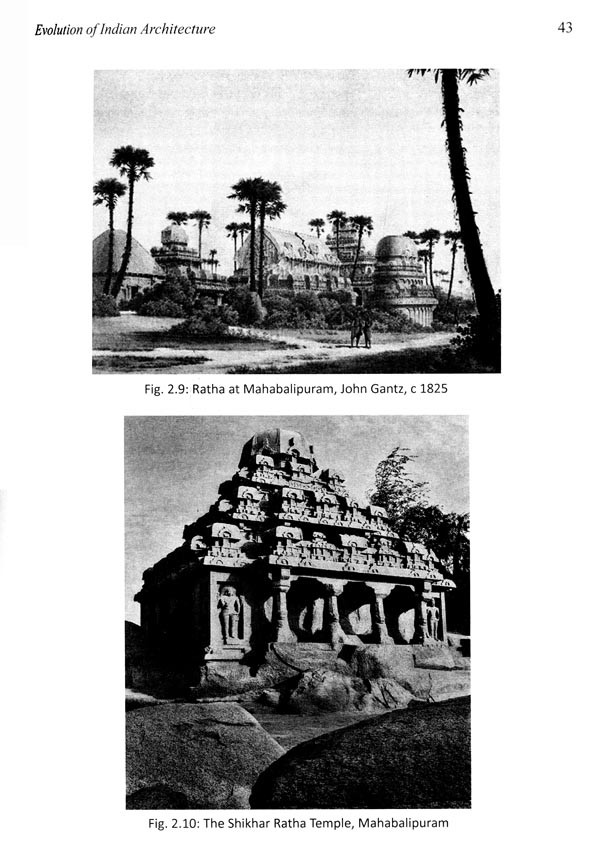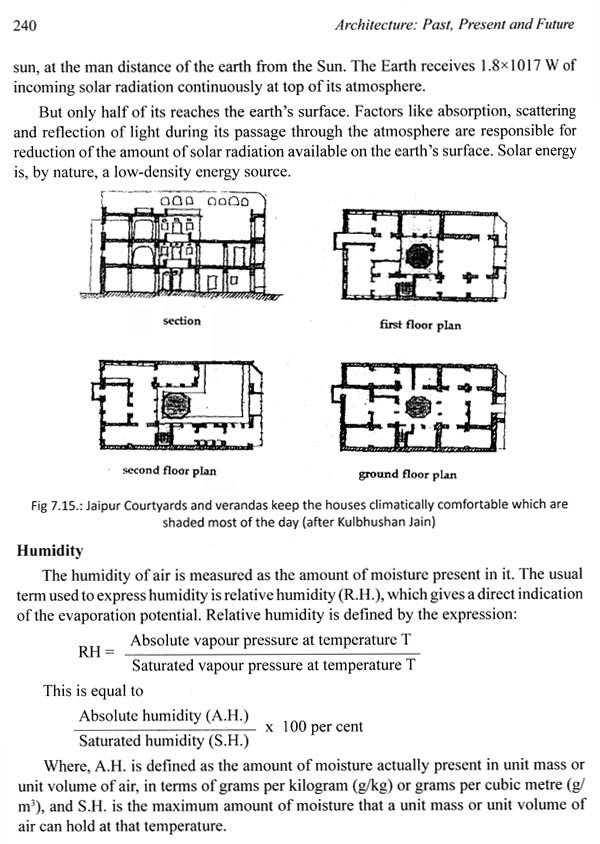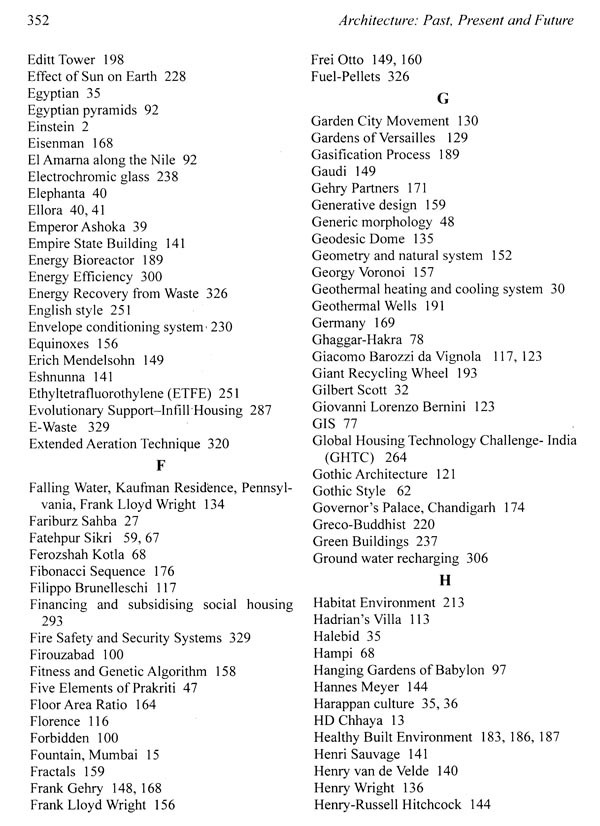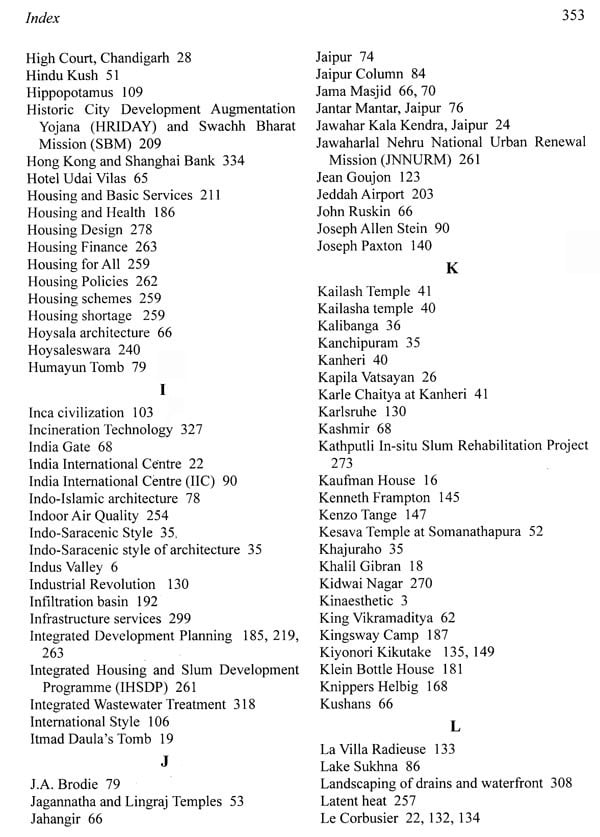
Architecture- Past, Present and Future
Book Specification
| Item Code: | AZG309 |
| Author: | A.K. Jain |
| Publisher: | DELTA BOOK WORLD |
| Language: | ENGLISH |
| Edition: | 2022 |
| ISBN: | 9788195551927 |
| Pages: | 368 (Throughout B/w Illustrations) |
| Cover: | HARDCOVER |
| Other Details | 10.00x7.50 inch |
| Weight | 870 gm |
Book Description
Every building is a part of ecological circle and has a footprint. As such, architecture is closely linked with urbanism, ecology, environment, natural resources, public health, water and energy. This makes architecture an evolving phenomenon, which is changing from architectonic to parametric and ecological. The book 'Architecture: Past, Present and Future' provides a comprehensive narrative on evolution of architecture, green building, climatology, building resources pyramid, parametricism and infrastructure services. Written in a simple language with about 310 illustrations, the book provides a 360° view of architecture.
"A. K. Jain spent a meaningful career in planning for Delhi. He was a leader in a wide range of complex issues of shelter strategies, retail, offices, recreation and open spaces, institutions, manufacturing, urban infrastructure, social amenities and transportation. He was an early proponent of sustainable cities and conservation. One could say without hesitation that the author is one of the "makers of modern Delhi."
Architecture corresponds to the technical achievements, materials and labour available. Egyptians mountainous pyramids show their immense labour and technical ability of quarrying, transporting and construction. They adopted columnar form in their buildings. The Greek construction was entirely 'post and lintel' and the maximum spacing of the column was determined by the amount of labour and largest piece of stone available. The Romans invented the arch, which allowed large openings to be spanned more conveniently by smaller elements. were capable of being handled. It was a milestone in the history of architecture when dome was introduced for roofing of the structure.
About 200 years ago the industrial revolution and the advent of the engines, new building materials and new forms of energy radically changed the architecture and urban pattern. The lifts, elevators, concrete, steel and electric services gave birth to modern architecture. The recent-post modernism and Parametric styles have created a new approach towards architecture. With increasing urbanisation, climate change and depletion of natural resources the environmental sustainability has emerged as a central issue.
The architects have been searching for the forms which relate more closely with the context and regional characteristics. This is witnessed in the India International Centre, New Delhi and articulated by its architect Joseph Allen Stein, "I strongly believe that being modern without being regional is inappropriate and regional without modernism reactionary". During the nineteen-sixties, Kenzo Tange, the phenomenal Japanese Architect-Urbanist made a very profound statement that "Architecture is changing from functional to organizational, from architectonic to urbanistic and from physical to environmental". Aldo van Hyck said that, "the time has come to conceive architecture urbanistically and urbanism architecturally".
**Contents and Sample Pages**

